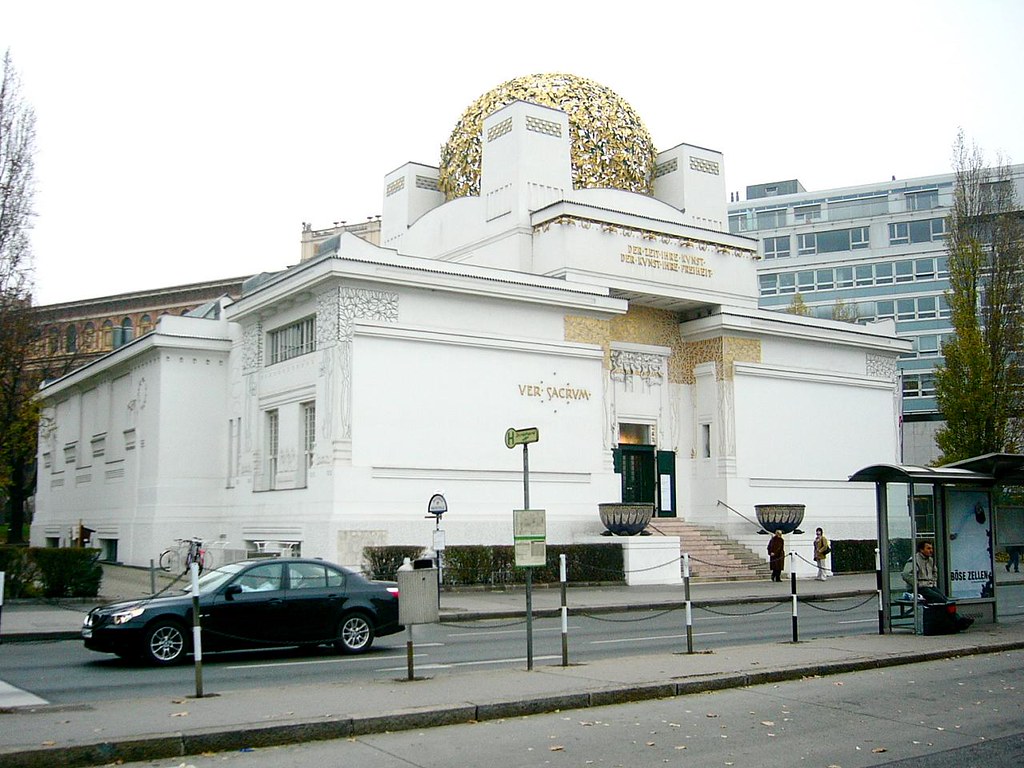A group of Austrian artists who had resigned from the Association of Austrian Artists, housed in the Vienna Künstlerhaus, founded the Viennese Secession on April 3, 1897. This movement included painters, sculptors, and architects and the first president of the Secession was Gustav Klimt, and Rudolf von Alt was named honorary president. His official magazine was called Ver Sacrum.
The Vienna Secession was formed by artists Koloman Moser, Josef Hoffmann, Joseph Maria Olbrich, Max Kurzweil, Wilhelm Bernatzik and others. This movement aspired to the renaissance of the Arts and Crafts and to bring more abstract and purer forms to the designs of buildings and furniture, glass, and metalwork, following the concept of total work of art, and to do so they tried to bring together Symbolists, Naturalists, Modernists, and Stylists.
As the name indicates, this movement represented a protest, of the younger generation against the traditional art of their forebears, a “separation” from the past towards the future.

Image source: https://search.creativecommons.org/photos/d1652762-53b4-47d7-94da-9d63c5bf93a8 by dalbera
What is the aim of Wiener Secession?
The Secession took a stand against the standardization of form and industrialized production and can be seen as part of the struggle against mass production and its perceived threat to human individuality.
Typical of the movement is an ornamental and linear graphic style exemplified by the curved lines and floral motif of Peter Behrens’ woodcut The Kiss.

Image source: https://search.creativecommons.org/photos/d1d759df-2a2b-42df-a097-1459c4330996 by dalbera
In France and Belgium, the Secession was called Art Nouveau, primarily intended as a reaction to impressionism. In Italy, the Liberty style emerged at the 1902 Turin Exhibition, in England a new style was born from the Arts and Crafts movement inspired by William Morris, and in Germany, the Secession was called Jugendstil, named after the magazine Der Jugend, it was centered in Munich, Berlin, and Darmstadt.
The group gained considerable credit for its exhibition policy, which made the French Impressionists somewhat familiar to the Viennese public. In 1903, Hoffmann and Moser founded the Wiener Werkstätte as a fine-arts society to reform the applied arts (arts and crafts).

Image source: https://search.creativecommons.org/photos/389600e0-0e5d-4fdf-be5e-2011dcf419c4 by Narisa
Unlike other movements, no style unites the work of all artists who were part of the Vienna Secession.
To pursue their goal they created their own exhibition space: the Secession building. The Secession Building designed by Joseph Maria Olbrich became known as the “temple” of the movement. Above its entrance was the phrase “Der Zeit ihre Kunst. Der Kunst ihre Freiheit.” (“To every age its art. To each art its freedom.”).

Image source: https://search.creativecommons.org/photos/67f29ccf-9fb5-46c3-946d-b4e91841caee by roryrory
Within the Secession movement, there were painters, sculptors, and even architects, who moved away from official art. They sought an integrated conception of art and attempted to create a synthesis of all the arts. Applied art was particularly influenced by the art of the Secession.
Info sources:
For more references, please also visit: www.jbdesign.it/idesignpro
